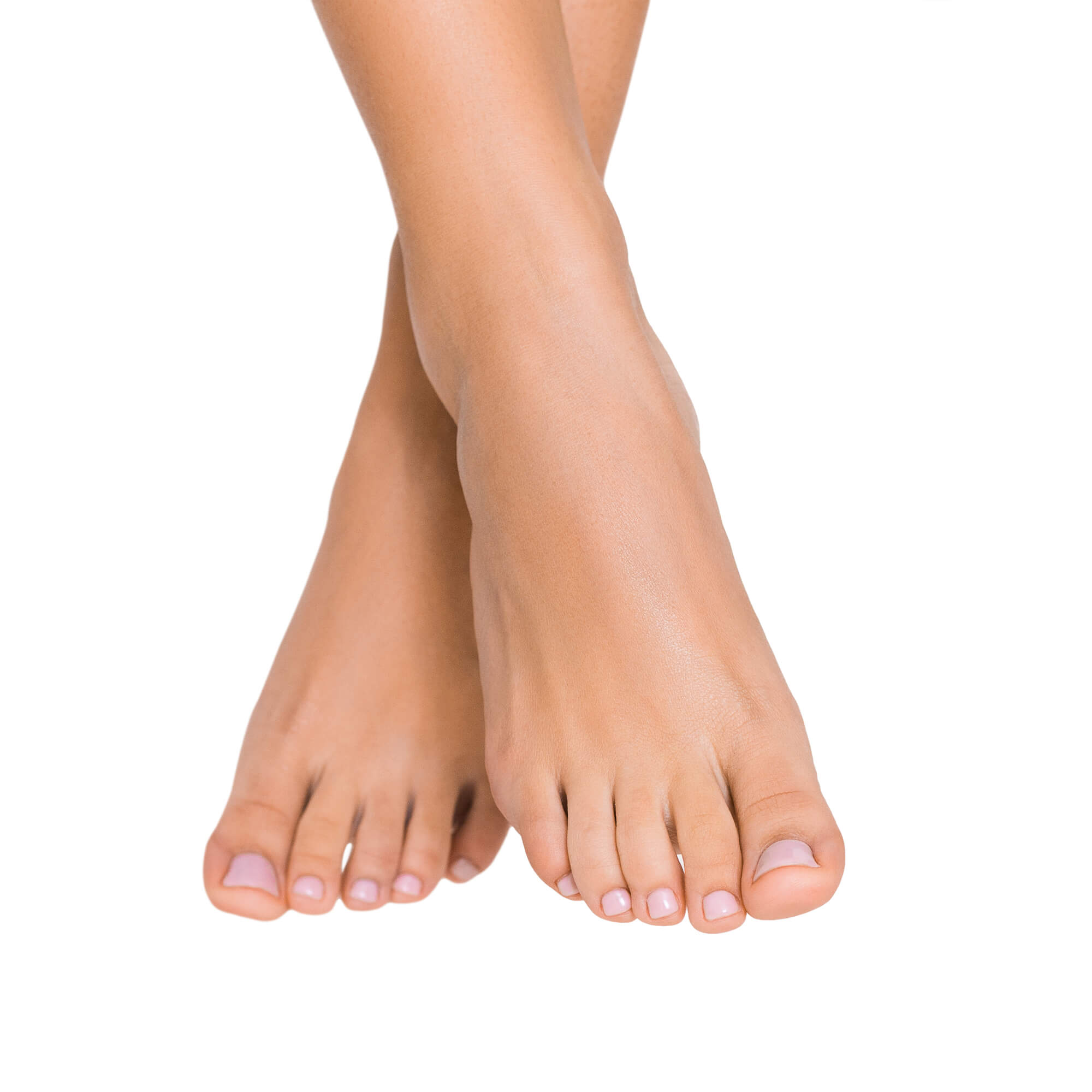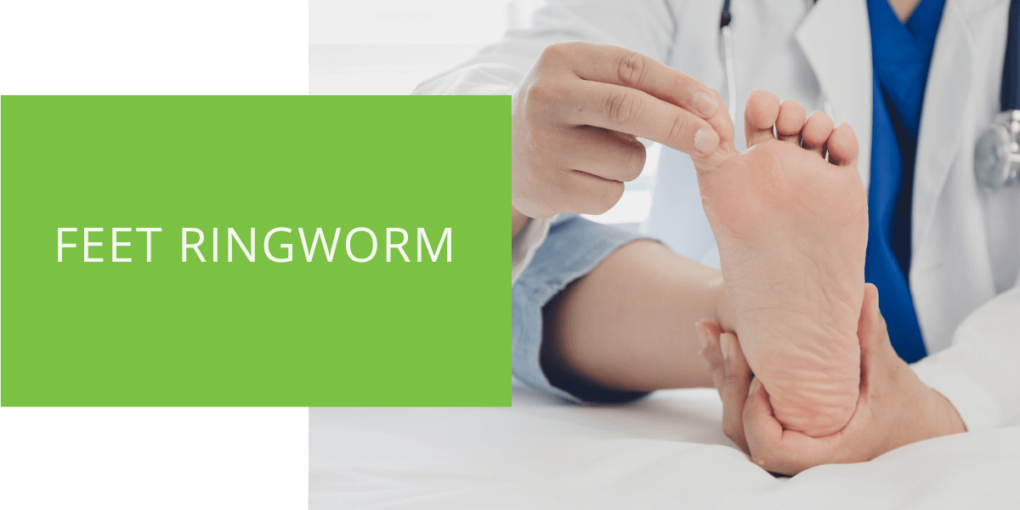Everything You Need to Know About Feet Ringworm
Ringworm is a common fungal infection that can affect the feet, scalp, groin, and other parts of the body. It is highly contagious and can be spread through direct or indirect contact with an infected person or surface. While it is not a serious infection, it can cause discomfort and be unsightly if left untreated. Here's everything you need to know about feet ringworm, from causes and symptoms to treatment and prevention.
What is Feet Ringworm?
Feet ringworm, also known as tinea pedis, is a fungal infection that affects the skin of the feet. It is caused by a group of fungi called dermatophytes, which thrive in warm and moist environments. Feet ringworm is highly contagious and can be transmitted through direct or indirect contact with an infected person or surface. It often manifests as an itchy and scaly rash on the soles, toes, or other parts of the foot. In severe cases, the skin may crack and bleed.
Causes and Risk Factors
Ringworm is caused by a group of fungi called dermatophytes. These fungi thrive in warm, moist environments and can be found in soil, animals, and humans. Different types of dermatophytes can cause ringworm, including Trichophyton, Microsporum, and Epidermophyton.
Several factors can increase the risk of developing ringworm. These factors include wearing tight-fitting shoes, having sweaty feet, and walking barefoot in public showers or locker rooms. The fungi that cause ringworm can spread easily in warm and moist environments, such as communal showers and locker rooms. Therefore, it is important to wear sandals or other protective footwear in these areas to avoid contact with infected surfaces.
Other risk factors for ringworm include weakened immune systems, diabetes, and age. People with weakened immune systems, such as those with HIV or cancer, are more susceptible to developing ringworm. Diabetes can also increase the risk of developing ringworm, as high blood sugar levels can create a favorable environment for fungal growth. Older adults are also more likely to develop ringworm, as their skin may be thinner and less infection-resistant.
In addition to these risk factors, certain occupations can increase the risk of developing ringworm. These include jobs that involve working with animals, such as veterinary medicine, farming, and pet grooming. People in these occupations may be more likely to come into contact with infected animals or their bedding, increasing the risk of developing ringworm.
In summary, ringworm is caused by dermatophytes and can be spread through contact with infected surfaces. Certain factors, such as wearing tight-fitting shoes, having sweaty feet, and weakened immune systems, can increase the risk of developing ringworm. It is important to take steps to prevent the spread of ringworm, such as maintaining good foot hygiene and avoiding contact with infected surfaces. If you suspect that you have ringworm, it is important to see a podiatrist for an accurate diagnosis and treatment.

Symptoms of Ringworm
The symptoms of ringworm can vary depending on the stage of the infection. The early stages of ringworm may present as a red, scaly rash on the skin of the feet, particularly on the soles, toes, or skin between the toes. The rash may be itchy and spread to other parts of the foot.
As the infection progresses, the rash may develop into more severe symptoms. The skin may become cracked and bleed, making walking or wearing shoes difficult. In some cases, the infected area may also develop blisters, which can be painful and may ooze fluid. If left untreated, the rash may spread to other body parts.
Different types of rashes can appear with ringworm. These include bullous, erythematous, and annular rashes. Bullous rashes are characterized by the appearance of fluid-filled blisters on the skin. Erythematous rashes are red and scaly, while annular rashes have a raised, ring-shaped border with normal skin in the center. These rashes can appear on any part of the foot, including the soles, toes, and skin between the toes.
It is important to note that ringworm can be mistaken for other foot conditions, including eczema, psoriasis, and contact dermatitis. Eczema is a chronic skin condition that can cause red, itchy, and inflamed skin. Psoriasis is a chronic autoimmune disorder that causes red, scaly patches on the skin. Contact dermatitis is an allergic reaction to a substance that comes into contact with the skin. If you suspect that you have ringworm, it is important to see a podiatrist for an accurate diagnosis and treatment.

Diagnosis
If you suspect that you have feet ringworm, it is important to see a podiatrist for an accurate diagnosis. The diagnosis of ringworm usually involves a physical examination and a review of your medical history. Your podiatrist may ask about your symptoms and any possible exposure to ringworm, such as walking barefoot in public showers or locker rooms.
To confirm the diagnosis of ringworm, your podiatrist may perform different tests, including skin scrapings and fungal cultures. Skin scrapings involve scraping a small amount of skin from the affected area and examining it under a microscope. Fungal cultures involve collecting a sample of skin from the affected area and growing it in a lab to see if any fungi grow.
While skin scrapings and fungal cultures are the most common diagnostic tests for ringworm, other tests can be used in some cases. These include Wood's lamp examination, which uses a special lamp to shine ultraviolet light on the affected area, and skin biopsy, which involves removing a small piece of skin from the affected area for examination.
Each diagnostic test has its benefits and drawbacks, and your podiatrist will recommend the best test based on your specific case. For example, skin scrapings may be more effective for diagnosing tinea pedis, while fungal cultures may be more effective for diagnosing tinea capitis.
It is important to note that self-diagnosis of ringworm can be difficult, as some symptoms may be similar to other skin conditions. Therefore, it is recommended to see a podiatrist for an accurate diagnosis and treatment.

Treatment
The treatment of ringworm usually involves the use of antifungal medication. Different types of antifungal medications can be used to treat ringworm, including topical creams, oral medications, and shampoos.
Topical antifungal creams are usually the first line of treatment for mild cases of ringworm. These creams are applied directly to the affected area and can help to relieve symptoms such as itching and redness. Some common types of topical antifungal creams include clotrimazole, miconazole, and terbinafine. These creams are available over-the-counter (OTC) at most drugstores.
In more severe cases, your podiatrist may recommend oral antifungal medications. These medications are taken by mouth and work by targeting the fungi causing the infection. Some common types of oral antifungal medications include itraconazole, fluconazole, and griseofulvin. The dosage and duration of treatment will depend on the severity and type of the ringworm infection.
Antifungal shampoos can also be used to treat ringworm on the scalp. These shampoos contain antifungal agents that can help to relieve itching and flaking. Some common types of antifungal shampoos include ketoconazole, selenium sulfide, and ciclopirox.
It is important to note that antifungal medications can have potential side effects, such as nausea, vomiting, and skin rashes. It is important to discuss the potential side effects of these medications with your podiatrist and how they can be managed. Your podiatrist may also recommend using additional treatments, such as salicylic acid or corticosteroid creams, to help manage the symptoms of ringworm.
In addition to medication, some home remedies can treat ringworm. These include keeping the affected area clean and dry, using antifungal powders, and avoiding tight-fitting shoes and clothing. It is important to discuss any home remedies with your podiatrist before using them to ensure they are safe and effective.

Prevention
Preventing feet ringworm involves maintaining good foot hygiene and avoiding contact with infected individuals or surfaces. Here are some tips for preventing feet ringworm:
- Wash your feet regularly with soap and water, especially after being in public showers or locker rooms. Dry your feet thoroughly, especially between the toes, to prevent the growth of fungi.
- Wear clean socks and shoes that fit properly and allow your feet to breathe. Choose socks made of breathable materials, such as cotton, and avoid tight-fitting shoes that can cause your feet to sweat.
- Use over-the-counter (OTC) antifungal products to prevent ringworm, such as sprays, powders, and creams. These products contain antifungal agents that can help prevent the growth of fungi on your skin. Apply these products to your feet and shoes regularly, especially if you are prone to ringworm.
- Avoid sharing personal items, such as towels, bedding, or clothing, with individuals who have ringworm. If you suspect you have been in contact with an infected individual or surface, wash and disinfect these items immediately.
- Be careful when using public showers, locker rooms, and swimming pools. These areas can be breeding grounds for ringworm and other fungal infections. Wear sandals or other protective footwear to avoid contact with the infected surface.
- If you have pets, take steps to prevent the spread of ringworm. Keep your pets clean and well-groomed, and avoid contact with infected animals or their bedding.
In summary, preventing feet ringworm involves maintaining good foot hygiene, using OTC antifungal products, and avoiding contact with infected individuals or surfaces. If you suspect that you have ringworm, it is important to see a podiatrist for an accurate diagnosis and treatment.
Conclusion
Feet ringworm is a common fungal infection that can affect anyone, regardless of age or gender. While it is not a serious infection, it can cause discomfort and be unsightly if left untreated. If you suspect you have feet ringworm, it is important to see a podiatrist for diagnosis and treatment. Early detection and treatment can prevent the infection from spreading to other parts of the body or other people.
In addition to foot ringworm, other types of ringworm infections can affect the body, including scalp ringworm, jock itch, and tinea cruris. These infections are caused by the same group of fungi and are usually treated with antifungal medication. It is important to note that ringworm can be transmitted from animals to humans, so it is important to wash your hands after handling pets.
In conclusion, feet ringworm is a common fungal infection that can be easily treated with antifungal medication. Practicing good foot hygiene and avoiding contact with infected people or surfaces can help prevent the spread of the infection. If you suspect you have feet ringworm, it is important to see a podiatrist for diagnosis and treatment.

